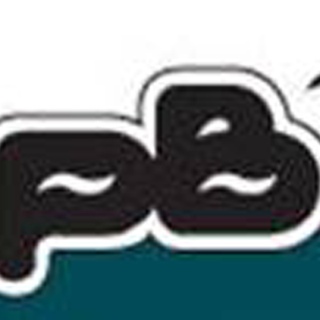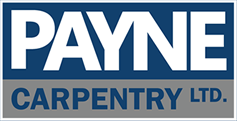Information
-
Audit Title
-
Conducted on
-
Prepared by
-
Location
1.0 HAND AND PORTABLE POWER TOOLS
-
1.1 - Are all tools and equipment used by employees at their workplace in good condition?
-
1.2 - Are hand tools such as chisels and punches, which develops mushroom heads during use, reconditioned or replaced as necessary?
-
1.3 Are broken or fractured handles on hammers, axes and similar tools replaced promptly?
-
1.4 Are tools handles wedged tightly in the head of all tools?
-
1.5 Are appropriate handles used on files and similar tools
-
1.6 Are tools cutting edges kept sharp so the tool will move smoothly without binding or skipping?
-
1.7 Are lever-type tools straight and unbent from excessive force?
-
1.8 Are portable circular saws equipped with guards above and below the base shoe?
-
1.9 Are circular saw guards free moving (I.e., not wired or wedged open)?
-
1.10 Are all AC-powered tools effectively grounded or a double-insulated type with cords in good condition?
-
1.11 For AC-powered tools used outdoors, is GFCI protection provided?
-
1.12 Are powered tools equipped with "dead-man" switches?
2.0 CARPENTRY MACHINE GUARDING AND SAFETY
-
2.1 Are fixed, removable or other guarding methods provided to protect workers from hazards created by the point of operation, ingoing nip points, rotating parts, flying chips and sparks <br>?
-
2.2 Are table saws guarded by a device, which rests in the work table, completely covering the saw, and can adjust itself to the thickness of the material being cut
-
2.3 Are ouch sticks or blocks available and used for saws and other cutting equipment to feed smaller pieces of stock?
-
2.4 Are radial arm saws so arranged that the cutting head will gently return to the back of the table when released?
-
2.5 Are saws used for ripping equipped with anti-kick back devices and spreaders?
-
2.6 Are provisions made to prevent machines from automatically restarting when power is restored after a power interruption?
-
2.7 Are all (a) moving chalking and gears and (b) pulleys and belts that are within 7 feet (2.1 meters) of the floor or working level properly guarded?
-
2.8 Are fan blades protected with a guard having openings no larger than 1/2inch (1.3cm), when operating within 7 feet (2.1meters) from the floor?
-
2.9 Are any foot-operated switches guarded or located to prevent accidental actuation by personnel or falling objects?
-
2.10 Is equipment and machinery securely anchored to prevent tipping or other movement during operation that could result on personal injury?
-
2.11 Are manually operated valves and switches controlling the operation of equipment and machines clearly identified and readily accessible?
-
2.12 Is there a power shut-off switch within reach of the operator's position at each machine?
-
2.13 Does the supervisor prohibit loose clothing, ties, long hair, and jewelry that may catch in moving machinery?
-
2.14 Do compressed air guns nozzles limit dead end pressure to 30 psi (2 bar)?
3.0 ABRASIVE WHEELS
-
3.1 Before new abrasive wheels are mounted, are they visually inspected and ring tested (I.e., gently struck to produce a bell-like sound)?
-
3.2 Do side guards cover the spindle, nut, and flange and 75% of the wheel?
-
3.3 Is the adjustable tongue on the top side of the grinder used and kept adjusted to within 1/4inch (6.5mm) do the wheel?
-
3.4 Is the work rest used and kept adjusted to within 1/8 inch (3mm) of the wheel?
-
3.5 Are all abrasive wheels rated for the rpm of the machine or tool the will be used on?
-
3.6 Are bench and pedestal grinders permanently anchored?
4.0 ELECTRICAL SAFETY
-
4.1 Are electrical machinery and appliances grounded?
-
4.2 Do extension cords being used have a grounding conductor?
-
4.3 Do plug adapters provide necessary ground conductor?
-
4.4 Are all disconnecting switches and circuit breakers labeled to indicated their use or the equipment served?
-
4.5 Do all interior wiring systems include provisions for grounding metal parts of electrical raceways, equipment and enclosures?
-
4.6 Are all electrical conduits, raceways and enclosures securely fastened in place?
-
4.7 Are all energized parts of electrical circuits and equipment guarded against a accidental contact by proper cabinets or enclosures?
-
4.8 Is sufficient access and working space provided and maintained about all electrical equipment to permit ready and safe operations and maintenance?
-
4.9 Are all unused openings (including knockouts) in electrical enclosures and fittings closed with appropriate covers, plugs or plates?
-
4.10 Are electrical enclosures such as switches, receptacles, and junction boxes, provided with tight fitting covers or plates?
5.0 HOUSEKEEPING / PREMISES CONDITION
-
5.1 Are accumulations of wood dust routinely removed from elevated surfaces such as ductwork, roof supports, etc.?
-
5.2 Is wood dust cleaned up from the floor regularly to prevent the dust creating a slipping hazard?
-
5.3 Are walking surfaces kept dry or appropriate means taken to assure the surfaces are slip-resistant?
-
5.4 Are all spilled hazardous materials or aned up immediately and according to proper procedures?
-
5.5 Is a clean up kit with a supply of absorbent materials and appropriate neutralizers located near the area?
-
5.6 Is scrap, debris and wasted stored safely and removed from the worksite promptly?
-
5.7 Is heavy stock properly and safely secured for storage?
6.0 CHEMICAL SAFETY
-
6.1 Are solvent- based glues, wood finishes, thinners and solvents kept in appropriate containers that are properly labeled?
-
6.2 Are flammable liquids properly stored in appropriate cabinets when not in use?
-
6.3 When flammable or toxic chemicals are in use, is the ventilation adequate to ensure that vapor concentrations do not buildup in the shop?
-
6.4 Are all spilled hazardous materiales or liquids, cleaned up immediately and according to proper procedures?
-
6.5 Is a clean up kit with a supply of absorbent materials and appropriate neutralizers located near the area?
-
6.6 Is wood dust from saws and other wood working equipment controlled with local exhaust ventilation?
-
6.7 Are there eye wash facilities within the work area where employees are exposed to corrosive materials or other chemicals hazardous to the eyes?
7.0 PERSONAL PROTECTIVE EQUIPMENT
-
7.7 Are chemical-resistant gloves worn to prevent skin contact with harmful chemicals?
-
7.1 Are approved safety glasses required to be worn at all times in areas where there is a risk of eye injuries form flying chips, splinters, sparks and other solid materials?
-
7.2 Are protective goggles or face shields worn over safety glasses where there is any danger of chemical splashes?
-
7.3 Are hard hats provided and worn where the danger of hitting the head exists?
-
7.4 Are hard hats free of damage to the shell and suspension system?
-
7.5 Is appropriate foot protection required where there is the risk of foot injuries from falling objects, crushing, or hot, corrosive, or toxic substances?
-
7.6 Are abrasion-resistant gloves worn for handling materials with sharp edges, splinters or other surfaces that can cause severe cuts, lacerations, abrasions or punctures?
-
7.7 Are chemical-resistant gloves worn to prevent skin contact with harmful chemicals?
-
7.8 Is hearing protection properly worn when workplace noise levels exceed exposure limits?
-
7.9 Are proper respirators available ad worn by employees exposed to airborne chemical substance hazards?
-
7.10 Is there a schedule to replace the cartridges in chemical respirators?
-
7.11 Is all protective equipment maintained in a clean, functioning condition and ready for use?
-
7.12 Are there first aid kits available?
8.0 LADDERS
-
8.0 Are ladders being inspected at this time?
-
8.1 Are all ladders used by employees at their workplace in overall good condition?
-
8.2 Are ladders free of sharp edges, splinters, splits, decay or broken rings, spreaders, locking clamps and side rails?
-
8.3 Have wooden and aluminum ladders been eliminated?
-
8.4 Are the joints between the steps and side rails tight, all hardware and fittings securely attached, and do the movable parts operate freely without binding or undue movement?
-
8.5 Do stepladder spreaders or locking devices securely hold the front and back sections in the open position?
-
8.6 Are ropes for extension ladders in good condition?
-
8.7 Are the rungs or steps clean?
-
8.8 Are the steps uniformly spaced and parallel and level when the ladders is in the position of use?
-
8.9 Are all damaged ladders tagged for destruction and kept out of service?
-
8.10 Are ladders rated to support at least 300lb (135kg?
-
8.11 Are stepladders limited to no more than 20 ft (6m) long?
-
8.12 Are straight ladders limited to no more than 30 ft. (9m) long?
-
8.13 Are extension ladders limited no more than 60 ft. (18m) long?
-
8.14 Is the straight extension ladders placed at a a pitch of 1:4?
-
8.15 Is the straight extension ladders placed to prevent slipping or is e base and top tied in the position?
-
8.16 For any ladder placed in front of a doorway, is the doors blocked or locked from the other side?
-
8.17 Are ladders tall enough to reach the required height?
-
8.18 Are ladders not placed on boxes, barrels, tables or other materials to gain additional height?
-
8.19 Are workers staying at least lower than 2 steps from the top of a step ladder or 4 steps from form the top of a single section or extension ladder?
-
8.20 Are workers not climbing on the bracing on the back legs of the step ladder?
-
8.21 Is there no more than one person on the ladder at a time?
-
8.22 Are provisions made to not carry tools and materials by hand?
-
8.23 If a ladders is used to provide access to an elevated platform or roof, do the side rails extend at least 36" (91cm) above the platform or roof edge?
9.0 ADDITIONAL COMMENTS
SIGNATURE
-
Auditor's signature
-
Select date
-













